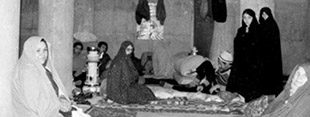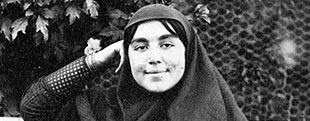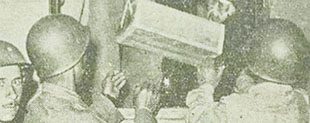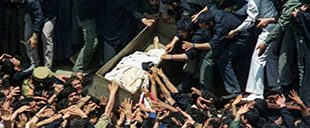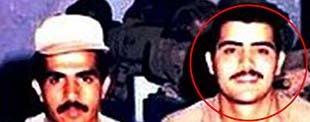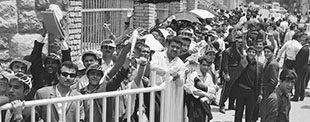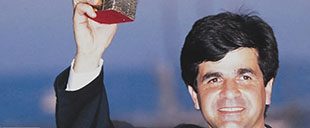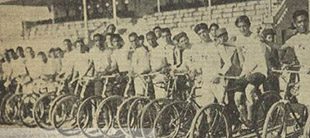Ninety years ago, in the heart of Iran’s capital city, something seemingly trivial became a symbol of power, class, and cultural transformation — the brimmed hat. While at first glance just a piece of attire, this accessory carried with it the weight of political change, social aspiration, and national identity. In the Tehran of 1935, hats were not just fashionable …
Read More »History
Spectacular photos from the time when Tehran residents lived in shelters
The Tehran Missile Barrage and Life in the Shelters In its 22nd issue, dated May 1, 1988, Adineh magazine published a special edition dedicated to the Tehran missile barrage. The cover featured a striking design by Ebrahim Haghighi — a large, black missile plummeting from the sky towards a delicate, lone flower rooted in a green field. The stark contrast …
Read More »The opening of the National Assembly with the presence of Reza Shah in 1935
The Tenth Term of the National Consultative Assembly and the Evolution of Iran’s Parliament: A Historical and Architectural Survey On the morning of 15 Khordad 1314 (June 5, 1935), the tenth term of the National Consultative Assembly of Iran (Majles-e Showrā-ye Melli) was officially inaugurated in a ceremonial session attended by Reza Shah Pahlavi and senior government officials. This moment …
Read More »Fakhr-al-Taj Mo’iri, daughter of Esmat-al-Dawlah and granddaughter of Nasser al-Din Shah Qajar
The Qajar Dynasty: Origins, Power, and Legacy in Iran (1796–1925) The Qajar dynasty (also spelled Kadjar), was a royal family of Turkic origin that ruled Iran from 1796 to 1925, marking a pivotal era in Iranian history. The Qajars rose to power after the fall of the Zand dynasty, uniting a fractured nation and leading it through one of its …
Read More »Russians deliver 11 tons of gold to Iran
I. The Announcement That Echoed Through History Seventy years ago, in the shadow of post-World War II geopolitics, a quiet but historically significant announcement made its way across headlines in Iran and beyond. In December 1955, the then-government of the former Soviet Union formally declared that it would compensate Iran for the occupation it had endured during the global conflict. …
Read More »Images from the world’s largest funeral released for the first time
On June 3, 1989, Ayatollah Ruhollah Khomeini, the founder of the Islamic Republic of Iran and its Supreme Leader since 1979, passed away after a long period of illness. His death marked the end of a defining chapter in modern Iranian history—a chapter that had seen a monarchy overthrown, a theocratic state established, and a revolution that changed the political …
Read More »Mehrdad Asemani in military uniform
Mehrdad Asemani: The Voice of Exile and Harmony Mehrdad Asemani, born on July 15, 1967, in Tehran, is a prominent Iranian singer, composer, and arranger whose name has become synonymous with nostalgia, romantic ballads, and sociopolitical commentary in Persian pop music. With a career spanning over three decades and collaborations with some of the most iconic Iranian vocalists, Asemani has …
Read More »Unseen photos from the Iran-Israel game 57 years ago
Iran’s First Asian Cup Victory: The Day Football Changed Forever – May 19, 1968 On May 19, 1968, a jubilant crowd of 40,000 Iranian football fans erupted with unparalleled joy at Tehran’s Amjadieh Stadium, now known as Shahid Shiroudi Stadium. The occasion was historic: Iran’s national football team had just won its first Asian Cup, defeating Israel in a fiercely …
Read More »Rarely photos of Jafar Panahi
Jafar Panahi: The Defiant Visionary of Iranian Cinema Jafar Panahi, born on July 10, 1955, is one of the most renowned and politically defiant filmmakers in contemporary world cinema. His films, often banned in his home country of Iran, have received global acclaim for their unflinching portrayals of societal constraints and the lives of the marginalized. Through a body of …
Read More »Old pictures of Laleh Park
Laleh Park: A Legacy of History, Culture, and Green Urbanism in Tehran Introduction In the heart of Tehran lies one of its oldest and most cherished green spaces: Laleh Park. Known before the 1979 Iranian Revolution as Farah Park, this 35-hectare oasis is more than just a recreational area—it is a living chronicle of Iran’s urban evolution, political transitions, artistic …
Read More »
